
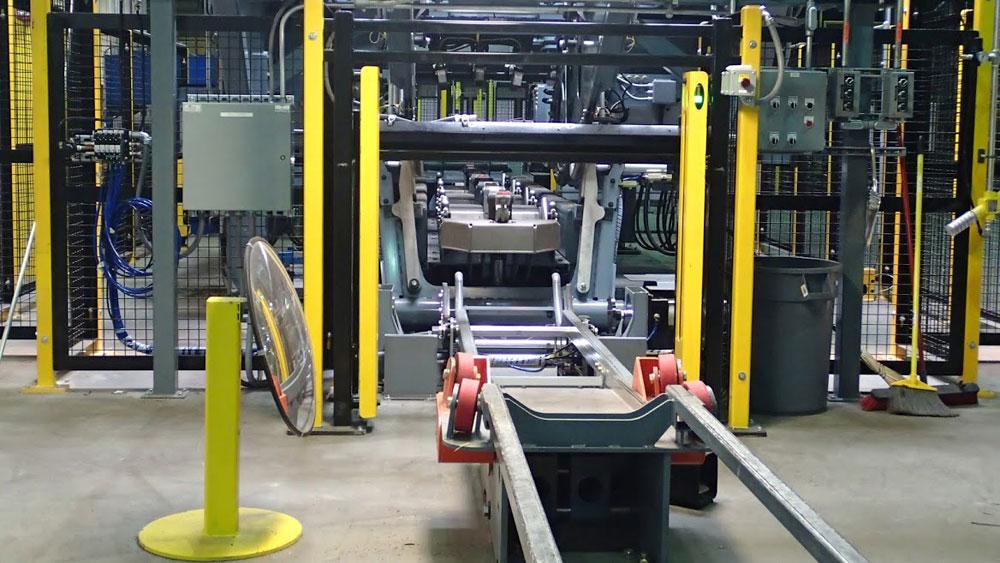
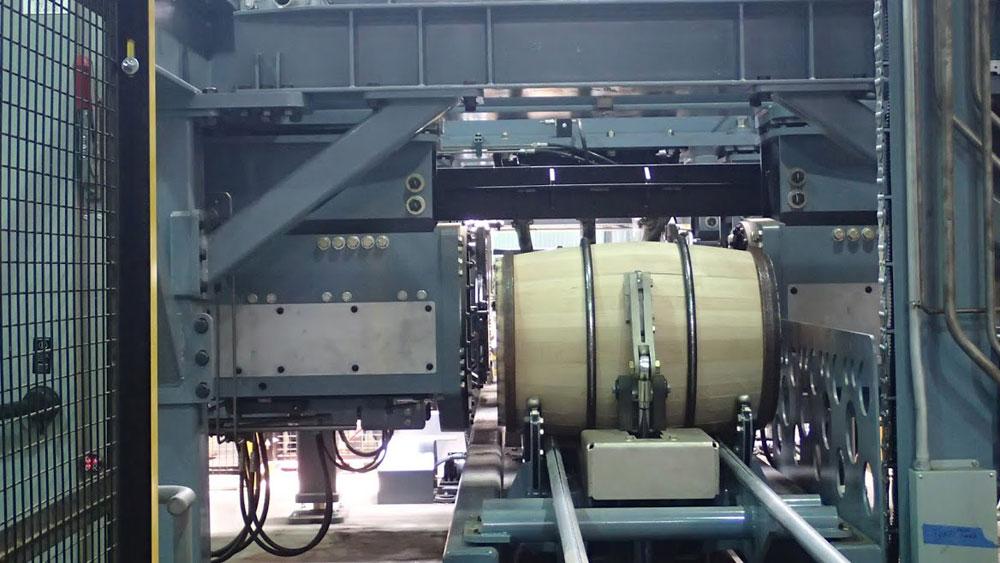
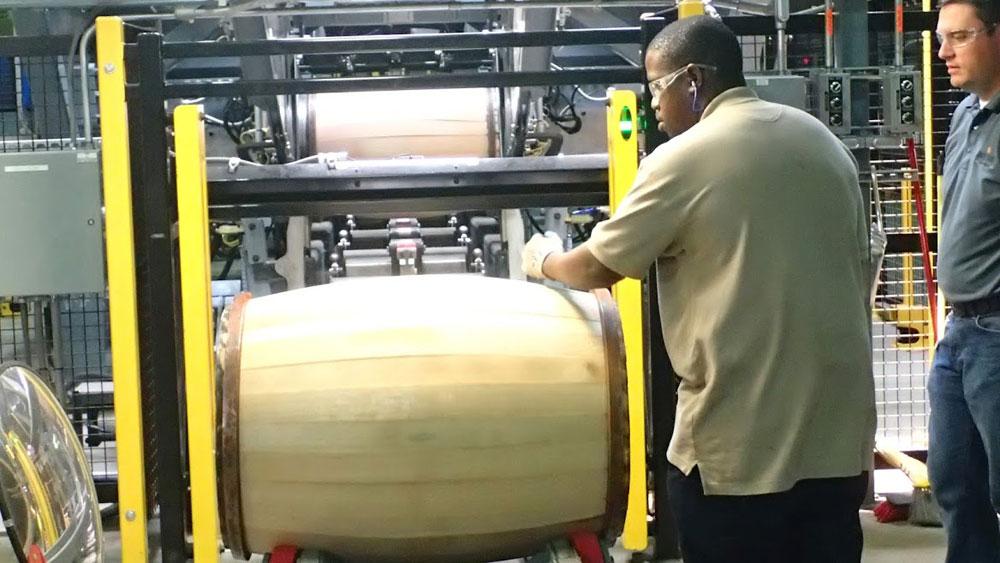
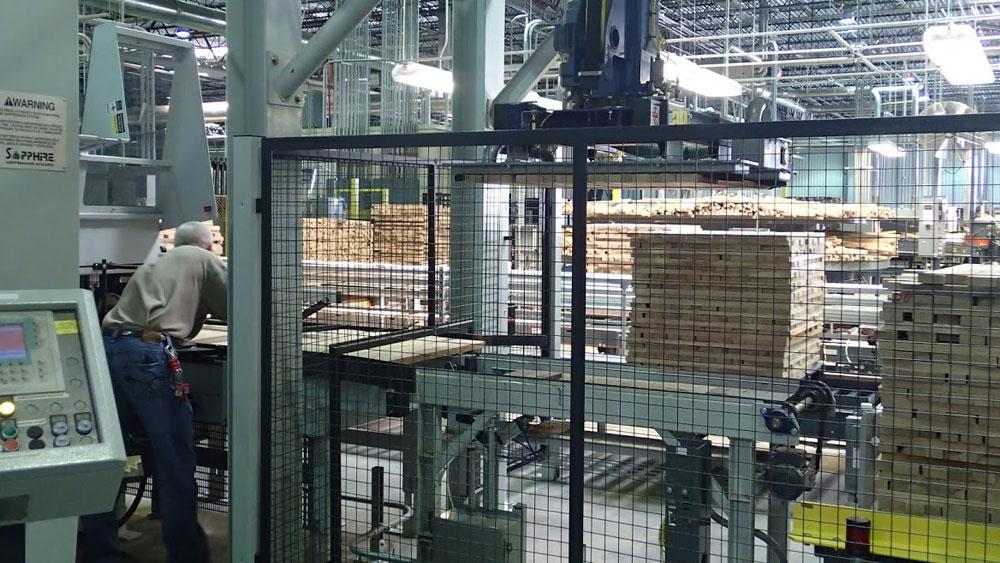
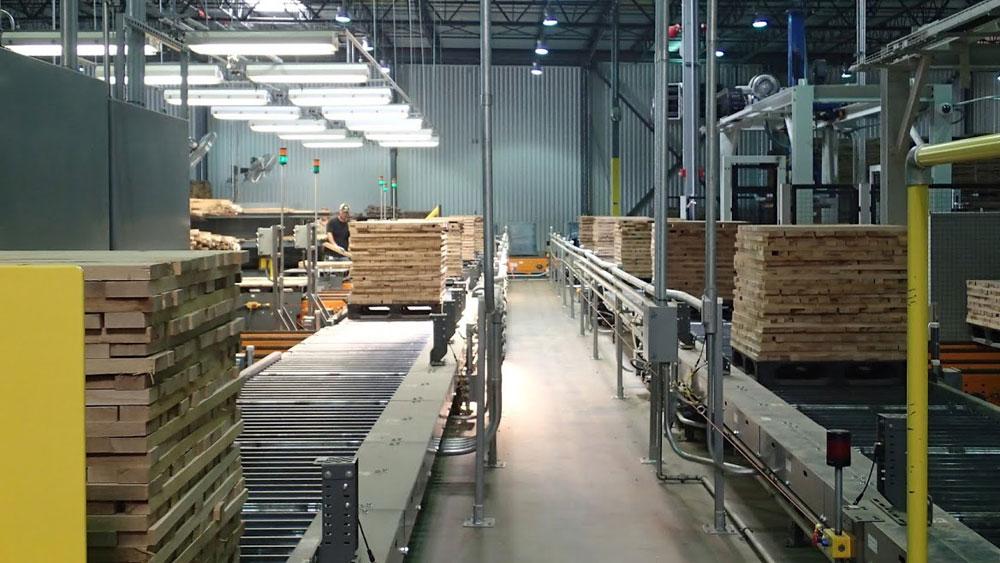
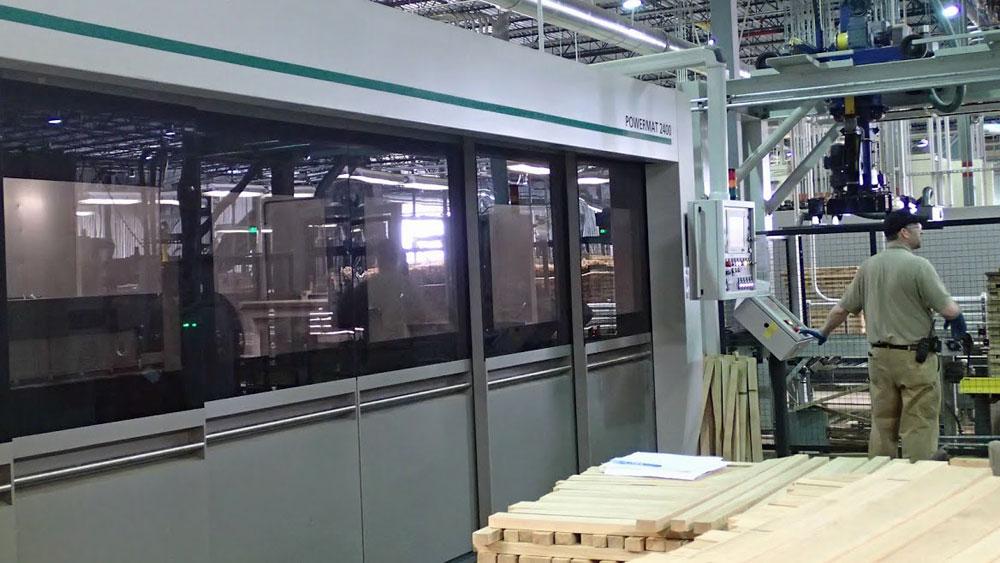
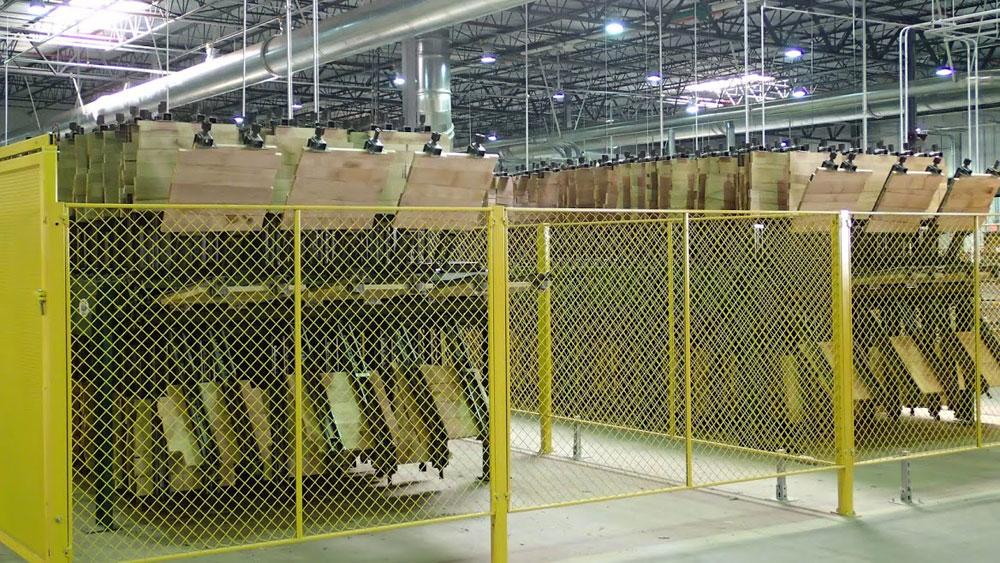
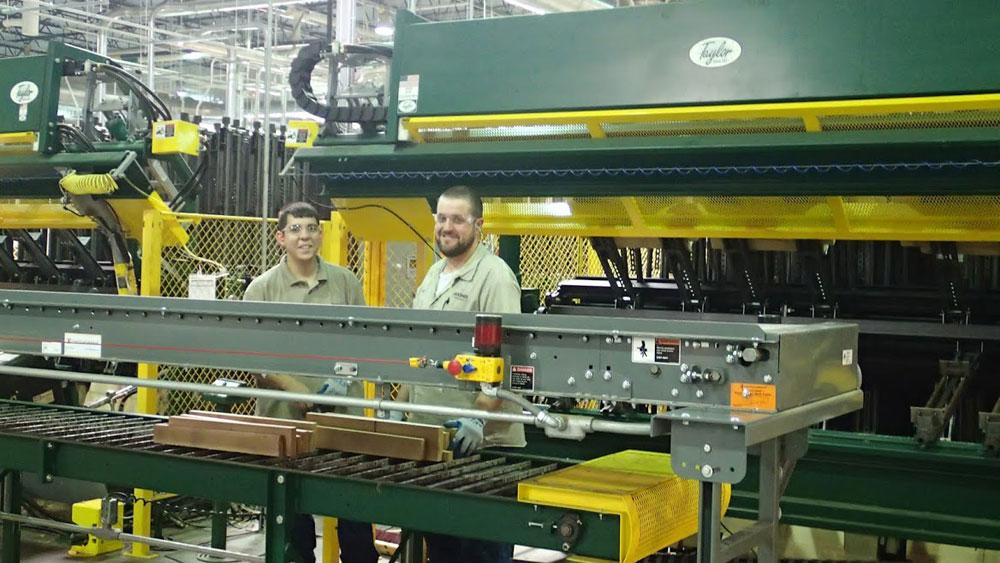
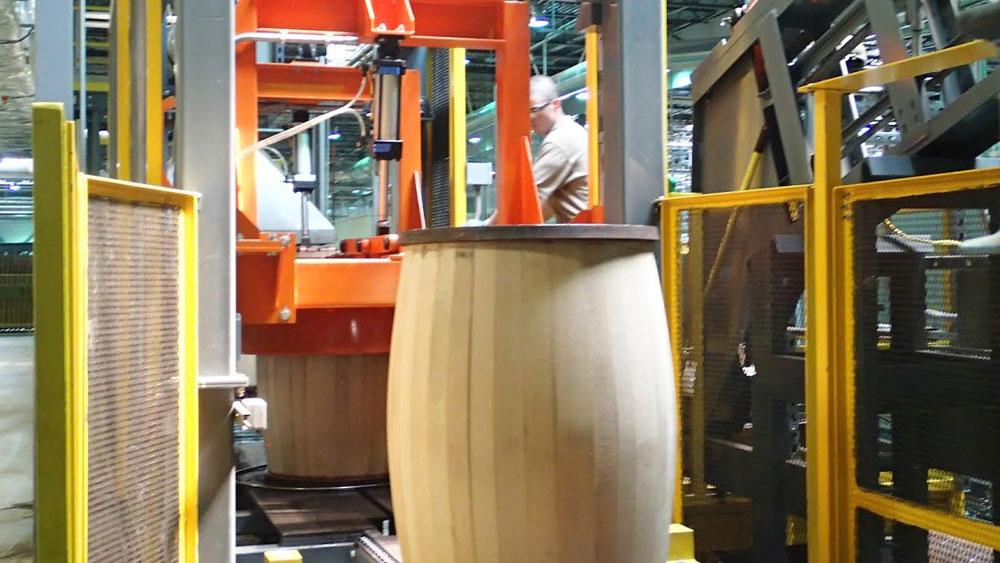
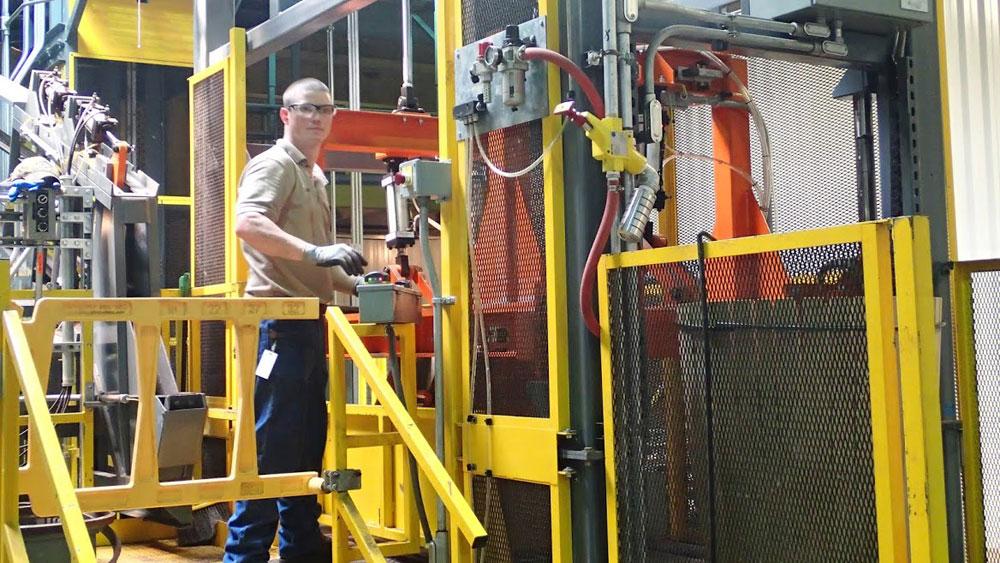
Instilling automation to what is traditionally a handcrafted operation not only improved the cost efficiency and productivity of the company’s barrel production, but earned Jack Daniel’s Cooperage the 2014 Wooden Globe for Innovator of the Year by the Woodworking Machinery Industry Association.
Jack Daniel’s Cooperage makes barrels for Brown-Forman, its parent company and America’s largest spirits and wine company. Brown-Forman is also the only major distiller in the world that owns and manufactures its own barrels, retaining 4,000 employees globally, with annual revenue just under $4 billion.
The Jack Daniel’s Cooperage makes white oak barrels for maturing Jack Daniel’s, Early Times, Old Forester and Woodford Reserve. According to Larry Combs, senior vice president/general manager, about half of the flavor and all of the color observed in a bourbon or Tennessee whiskey comes from the wood, making the control of that supply and quality critically important. To be considered a bourbon or a Tennessee whiskey, the product has to be aged in a new, charred white oak barrel.
“The reason it is white oak is because of the configuration of the wood,” says Combs. “It’s one of the few woods, due to the orientation of the tylose, which is actually liquid tight. For that reason, white oak has been used to make barrels for hundreds of years, and it is currently a requirement for it to be a bourbon or Tennessee whiskey.”
For Brown-Forman, the barrel making process starts with the log. The company currently has three internal mills and buys from a number of outside partners as well. Once chosen, the wood is then quarter-sawn instead of flat-sawn.
“We start with the log and produce what we call barrel sets, or a group of staves,” says Combs. “There are about 32 staves in a barrel. Those will be transported to one of our cooperages. From there, the staves have to be cleaned, planed and shaped, which is what the stave jointing machine does.”
At its new 150,000-square-foot facility in Trinity, AL, the process utilizes two Weinig CNC stave jointers, as well as Weinig P2400 planers. Since the maximum circumference of a barrel is near the middle, every individual stave has to be cut at a specific angle to fit that circumference. Combs says the Weinig stave jointing machines will scan the stave, measure the width, calculate the angle, and cut every stave to fit perfectly into the barrel specification.
“The new jointing equipment that we put in, by cutting the exact right angle for every individual stave, means that we have a much cleaner fitting barrel and a much tighter barrel,” says Combs.
Along with improved yield, another benefit of the technology is consistent quality. Using the geometrically correct staves greatly contributes to the ease of raising a barrel, and the staving jointers have became one of the company’s most critical pieces of machinery, Combs says.
Once the staves are raised and a temporary truss and head ring applied, the barrel is steamed to soften the wood for bending. A windlass machine is used to squeeze the ends together, before the barrel undergoes charring.
In addition to Weinig, James L. Taylor and Brown-Foreman Engineering assisted in the system upgrade.
Thinking Beyond Today
According to Combs, Brown-Forman’s approach to technology is driven by cost, efficiency and quality — with a forward-thinking strategy. Sometimes long-term goals may require a change in process, such as in the case of the stave jointers. Combs says this helps orient the internal teams, research and development, and engineering groups to then be focusing on technology beyond what is in their plant today.
Take the adoption of CNC machines for barrel making. Combs says the company began laying the groundwork a number of years ago, “so that when we were building one of the first cooperages in many years, we avoided simply replicating and modernizing the existing process.”
Opportunities to automate and improve efficiency and yield through technology are always around, says Combs. These include basics, such as identifying and eliminating existing and potential bottlenecks in the process.
“Hopefully, when the opportunity presents itself, you are able to leverage the technology to take those kinds of step changes,” he adds.
Combs says the ability to adapt and learn from the broader woodworking industry and then put that knowledge into its own processes helped Brown-Forman win the Wooden Globe. The nature of how Brown-Forman is set up and structured also enables it to maintain a long-term focus and sustain it into the future.
“Brown-Forman is a publicly traded company but it is majority family-owned and controlled,” says Combs. “It allows us to take a longer term view than many companies can. We are not quite as tied to the quarterly results, and can take a multi-year view. We can build brands over the long haul.”
And while it is essential for any manufacturer to consider immediate as well as long-term impacts before crucial decisions are made, it is even more critical for a company like Brown-Forman.
“Once we make the barrel, we put the whiskey in it and it is several years before we are actually emptying the barrel and bottling the product,” Combs adds. “So if we make a bad decision, we have to live with those consequences for a long time.”
WOODEN GLOBE 2014 INNOVATOR
Jack Daniel’s Cooperage was awarded the 2014 Wooden Globe for Innovator of the Year by the Woodworking Machinery Industry Association. The award is presented to a company that manufactures an innovative product or uses an innovative process using high-technology machinery supplied by one or more WMIA member companies.
A subsidiary of Brown-Forman, Jack Daniel’s Cooperage was nominated for the award by Jason Neafus of Hoosier Woodworking.
For its new 150,000-square-foot plant in Trnity, AL, the company looked to improve speed and consistency in the stave-making process, says Larry Combs, senior vice president and general manager. It transitioned from what was traditionally a hand operation to CNC stave jointing technology.
“By cutting the exact right angle for every individual stave, we have a much cleaner fitting barrel and a much tighter barrel,” says Combs. Improved yield is also a benefit.






Have something to say? Share your thoughts with us in the comments below.